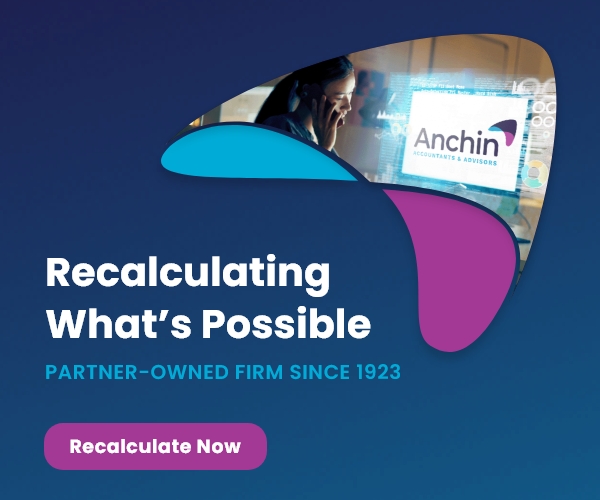Taxes are top of mind for just about everyone right now, and although most of the mental energy is consumed with worry over the size of the annual bill, this is a particularly good time to begin thinking strategically about how your organization will approach tax planning in 2025 and beyond.
What does it look like to take a strategic approach to tax planning? And more importantly, how does it affect businesses over the long-term? In this article, Steve Richards, an Atlanta-based CFO with FocusCFO, a provider of embedded fractional CFO services across the U.S., offers guidance for how financial professionals can shift the tax mindset within their organizations to one that allows them to foster long-term growth and build business value over time.
Foster a mindset shift from lifestyle business to value growth business
There comes a point in the lifecycle of many businesses where the owner or owners must make a choice between maintaining the organization as a lifestyle business or shifting to one focused on value growth, Richards says. This shift often sparks significant transformation within a business, including the need to sacrifice some of the so-called perks of the lifestyle mindset. For instance, many small to midsize business owners use their businesses as pass-through entities, running personal expenses through them to lower the reported profit and minimize the tax burden, Richards explains. Bringing this practice to an end can be challenging for owners, who often grow accustomed to the immediate benefits.
It’s important to remember, however, that, while this approach may benefit the business and its owner in the short term, it could create significant negative impact over the long term, in a few keyways. First, it can limit the growth potential of the business, re-routing profits away from the business rather than using them to invest in its growth and scale, he said. Second, it can limit available financing options, given that financial institutions focus on overall cash flow, which makes businesses less desirable for the potential lender. Lastly, taking a lifestyle approach to minimizing taxes can lead to a lower overall business valuation, which can become a significant issue when the owners approach a potential exit, Richards says, potentially leaving a lot of money on the table.
If the ultimate goal is to sell the business, it is in the owners’ best interest to ensure the financials are as attractive as possible. And that involves getting strategic when it comes to tax planning.
“You have to change the process. You have to start looking at everything holistically,” Richards says. “You don’t even know what your business is capable of until you maximize your tax strategy.”
Become a tax strategy advocate
To help shift the approach to tax planning, financial leaders can flex their communication and negotiation skills to build a case for their owners about the potential negative effects of misguided tax planning – and the potential for significant benefits if they take another approach.
“More strategic tax decisions ultimately contribute to the positive growth and valuation of a business,” Richards says. “You’re improving cash flow. You have funds available for expansion, technology, and reinvestment into the company. You even have resources that can help you attract and retain talent. These are all offshoots of the tax strategies that businesses can put in place.”
It’s also important to educate business owners and executives about the importance of planning ahead. Say an owner has been advised to change the tax status of the business – moving from an LLC or S Corp to a C Corp, for instance, or vice versa. In changing tax status, the IRS may require a 5 year look back to be effective. That means the time to begin preparing is now if the owner hopes to take advantage of the change in status sooner rather than later.
Empower your team to think strategically
Senior-level financial leaders are charged with looking toward the future of the business, helping the owner or owners plan for the next three to five years. This process is critical in aligning tax strategy with the overall business goals and in balancing short-term tax efficiency with long-term value creation, Richards says.
Designing a tax strategy also requires proactive planning in partnership with the other members of the finance team – CPAs, controllers, bookkeepers, etc. Financial leaders have an opportunity to empower their teams to think strategically about tax planning, Richards says. This includes encouraging them to research new deductions and credits, as well as relevant tax code provisions with the potential to benefit the business now and in the future.
“The tax laws are changing rapidly,” Richards says. “There are lots of advantages out there, but you have to make it part of your priorities to be strategic about it. If you miss those opportunities, it affects your business.”
How to implement tax strategy into your organization
Financial professionals have a powerful opportunity to transform the growth potential of their businesses by incorporating tax planning into a company’s broader cash flow strategy, Richards said. That process begins with four key steps.
- Develop a clear financial strategy with defined goals.
- Engage with tax professionals early in the planning process.
- Invest in technology and systems for accurate financial reporting.
- Educate the leadership team on the importance of strategic tax planning.
Tax filings come around once a year, but they require a thoughtful and strategic year-round approach to minimize the financial burden and maximize growth potential for the business, Richards said. “You don’t have to generate more revenue to have improved cash flow,” he said. “Tax strategy is about holding on to more of the money your business has already earned.”
At FocusCFO, we help our clients build holistic, forward-looking cash flow and tax strategies that maximize growth potential. Interested in joining our team of fractional CFOs across the U.S.? Contact us today!























